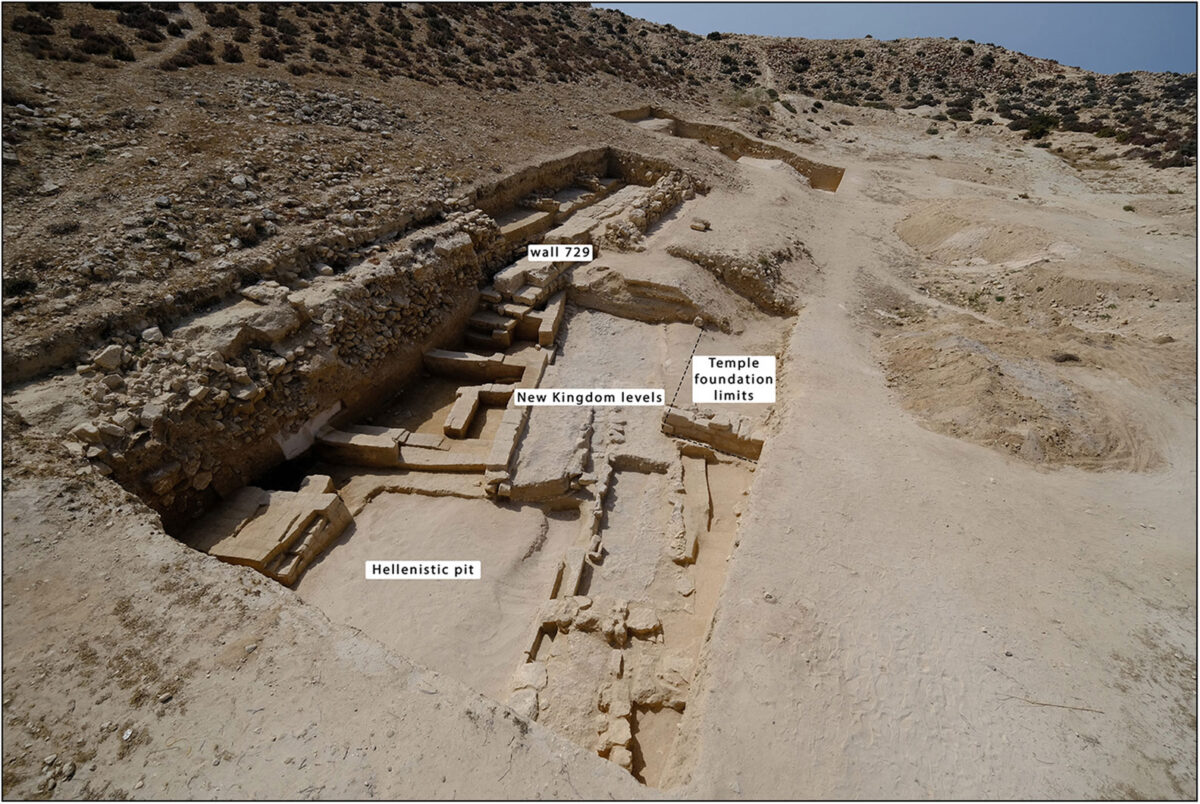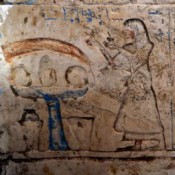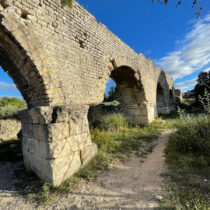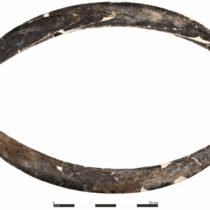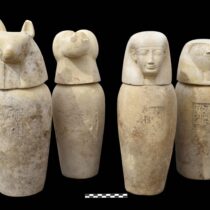A settlement dating to the Ramesside Period of ancient Egyptian history (c. 13th – mid-11th century BCE) has been identified at Kom el-Nugus, also known as Plinthine, near Taposiris Magna, 43km west of Alexandria. This discovery is significant, as Plinthine was previously associated only with finds from the Hellenistic period onward. The recent findings were made during the latest fieldwork of the French Mission of Taposiris Magna and Plinthine (MFTMP), directed by Bérangère Redon, and have been published in full (open access, free) by Sylvain Dhennin in the journal Antiquity.
Initially, excavations at the upper part of Kom el-Nugus revealed traces of the Late Period (c. 664–332 BCE) and the Third Intermediate Period (1070–664 BCE) in an area that was later extensively redeveloped during the Hellenistic period to accommodate a temple. The area fell into disuse and was plundered during the Roman Imperial period (30 BCE–CE 476). Previous surveys and small-scale excavations had provided hints of an even earlier occupation, possibly dating back to the reign of the heretic pharaoh Akhenaten (18th Dynasty) and continuing throughout the Ramesside period (19th and 20th Dynasties). However, the evidence consisted mainly of small, portable finds or reused architectural elements, which were insufficient to confirm the existence of an actual settlement.
Since 2022, the excavation team has uncovered well-preserved New Kingdom structures at deeper levels between the Hellenistic temple and a retaining wall, extending beneath both. The site appears to have “survived Hellenistic modifications,” preserving architectural remains in the form of a mudbrick settlement. This settlement consists of two groups of buildings arranged on either side of a street and developed in two distinct phases, with the second phase having multiple modification stages.
The first phase is associated with a two-room building. The second phase initially featured two buildings linked by a slightly sloping street, which included a water-collecting system designed to drain surface water and protect the bases of the adobe walls. Over time, the buildings and the street underwent several modifications, with visible additions and material removals at three distinct stages. A pit containing a hoard of five miniature ceramic bowls was likely dug during the middle of these stages. The rapid succession of changes at the site suggests intermittent occupation.
The name and exact function of the settlement remain unknown. However, researchers propose that its temporary yet recurrent use over a long period could indicate a military outpost, possibly housing a garrison. Similar posts, established to fortify Egypt’s buffer zone and control its borders during its period of greatest expansion (mid-18th Dynasty – end of the Ramesside period), have been identified along Egypt’s northern coastline, both west and east of the Delta. Whether this newly discovered site served such a purpose or had another function remains to be determined by future research.
